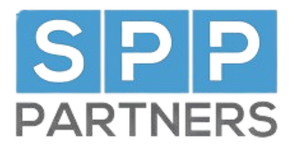Traction: Get A Grip On Your Business
The best-selling business book by Gino Wickman

Do You Have A Grip On Your Practice?
Or Does Your Practice Have A Grip On You?
Most dentists and practice owners face similar frustrations – personnel conflict, never-ending task lists, and inadequate growth. Decisions never seem to get made, or, once made, fail to be properly implemented.
But there is a solution. It’s not complicated or theoretical.
It’s called the Entrepreneurial Operating System (EOS) designed by author Gino Wickman. It’s a practical method for achieving the business success you have always envisioned. More than 10,000 companies use it and swear by it. And SPP is one of them.
How does EOS solve common business problems?
By focusing on these core areas, EOS provides a comprehensive framework that addresses the root causes of many business challenges, paving the way for sustainable growth and success.
It’s called the Entrepreneurial Operating System (EOS) designed by author Gino Wickman. It’s a practical method for achieving the business success you have always envisioned. More than 10,000 companies use it and swear by it. And SPP is one of them.
In Traction, you’ll discover the secrets of strengthening the 6 key components of your business that lead to more focus, more growth, and more enjoyment.
Because EOS has impacted our business in such a profound way, we’d like to gift you a free copy. Our company is built on making an impact and we believe this book can have a profound and lasting impact on your practice, your team, and your everyday life.
Free Copy of Gino Wickman’s Book, TRACTION, for Dental Practice Owners
To receive a complimentary copy, simply fill out the form below. We’ll ship you the book within 3-5 days. Simple as that.
How Can Your Leadership Team Implement a Holistic System to Run Better Businesses?
Implementing a holistic system to enhance business operations requires a strategic approach that aligns the entire organization towards common goals. Here's how leadership can effectively achieve this:
- Clarify Vision and Goals
Begin by clearly defining the company's vision and setting achievable goals. Engage the whole team in this process to ensure everyone is aligned and committed to the same objectives. - Establish Strong Leadership
Develop a leadership team that embodies the organization's values and goals. Encourage leaders to communicate openly and lead by example, fostering a culture of transparency and trust. - Utilize an Integrated Framework
Adopt an integrated management framework that combines various functions such as team roles, accountability, and processes. This framework should help streamline operations and enhance communication across departments. - Prioritize People and Processes
Recruit talent that complements the existing team and invest in continuous training. At the same time, refine processes to ensure they support the business goals effectively and encourage innovation. - Regular Review and Adaptation
Implement regular check-ins and performance evaluations to assess progress towards goals. Be prepared to adapt strategies as needed to maintain momentum and address any emerging challenges.
By focusing on these components, businesses can foster a cohesive, efficient, and balanced organizational environment, ultimately driving better control and improved business outcomes.
Advantages of a Cohesive Team Within an Organization
An organization with a cohesive team experiences numerous advantages that contribute to its overall success and efficiency.
Improved Business Operations
When team members work in harmony, business operations run more smoothly. There’s a shared understanding of goals and objectives, leading to efficient processes and better decision-making. This unity minimizes misunderstandings and errors, allowing the organization to function like a well-oiled machine.
Enhanced Control and Adaptability
Having a cohesive team empowers leaders to gain more control over daily operations. They can rely on their team members to execute tasks effectively, which frees up leadership to focus on strategic planning. This synergy also allows organizations to quickly adapt to changes in the market, ensuring they remain competitive.
Balanced Work-Life Integration
A well-coordinated team reduces the stress and workload on individual employees, promoting balanced work-life integration. When responsibilities are clearly shared, employees can maintain their personal well-being alongside their professional duties, leading to increased job satisfaction and reduced burnout.
Collective Progress and Synergy
As the entire organization moves forward together, there's a collective sense of achievement and progress. Employees are more motivated when they see their work contributing to a shared vision. This fosters a supportive environment where individuals are encouraged to share ideas and innovate, making the team more dynamic and forward-thinking.
In essence, a cohesive team is a catalyst for smoother operations, strategic growth, and a harmonious workplace.
Creating a cohesive leadership team with a unified vision is crucial for driving organizational success. Here’s how you can achieve this alignment:
1. Develop a Clear and Compelling Vision
- Clarity is Key: Start by crafting a vision that is clear, concise, and enticing. Everyone in your leadership team should understand not only the vision itself but also the reasons behind it.
- Engage the Team: Involve your leadership team in the vision creation process. Seek their input to ensure it reflects collective aspirations. This collaboration fosters a sense of ownership.
2. Communicate Effectively
- Consistent Messaging: Regularly communicate your vision through meetings, emails, and informal discussions. Consistency helps reinforce the message.
- Storytelling: Use compelling stories that illustrate your vision, making it relatable and memorable for the team.
3. Align Goals and Objectives
- Strategic Planning: Break down the vision into actionable goals and objectives. Each leader should understand their role in achieving these targets.
- Regular Review: Schedule periodic reviews to monitor progress and make necessary adjustments, keeping everyone on the same page.
4. Foster a Culture of Collaboration
- Encourage Teamwork: Promote open dialogue and collaboration among team members. This builds trust and fosters an environment where diverse ideas merge into a unified vision.
- Conflict Resolution: Address conflicts promptly and constructively to maintain alignment and focus on the common goal.
5. Empower and Support Your Leaders
- Provide Resources: Ensure your leadership team has access to the resources and tools they need to succeed. This could include training, time, or technology.
- Recognize Achievements: Acknowledge and celebrate milestones, big or small, to motivate your team and demonstrate progress towards the shared vision.
By diligently working through these steps, you can align your leadership team around a shared vision, driving your organization toward a successful future.
What are the Six Key Components that can strengthen your business?
Building a robust business requires a focus on six essential components that help streamline operations and boost performance. Let’s delve into these key areas to understand how they can transform your organization.
1. Vision Clarity
Establishing a clear and compelling vision is where it all begins. Your vision sets the direction for the entire company and ensures everyone is aligned with the organization's goals. Communicate your vision effectively to foster shared understanding and commitment across all levels of your business.
2. Strong Leadership
Effective leadership is crucial in guiding your business towards success. Invest in developing leaders who can inspire and motivate their teams, make informed decisions, and steer the company through challenges. Strong leaders create a culture of accountability and drive progress.
3. Data-Driven Decisions
Utilizing data effectively can significantly enhance your business performance. Implement systems to track key metrics and gather valuable insights. With concrete data at hand, you can make informed decisions, identify trends, and respond proactively to market changes.
4. Robust Processes
Streamlined processes are the backbone of operational efficiency. Document and refine your business processes to ensure consistency and quality in delivery. This reduces errors, saves time, and enhances productivity across the organization.
5. Customer Focus
Understanding and prioritizing customer needs is essential for business growth. Develop strategies to engage with your customers regularly and gather feedback. Use this information to tailor your products or services, ensuring they meet evolving demands and enhance customer satisfaction.
6. Scalable Systems
Having scalable systems in place is vital for sustainable growth. Ensure your infrastructure, technology, and resources can support expansion without compromising quality or service delivery. This readiness to scale allows your business to seize opportunities and adapt to market dynamics.
Focusing on these six key components can dramatically strengthen your business foundation, positioning you for long-term success and resilience in a competitive environment.

